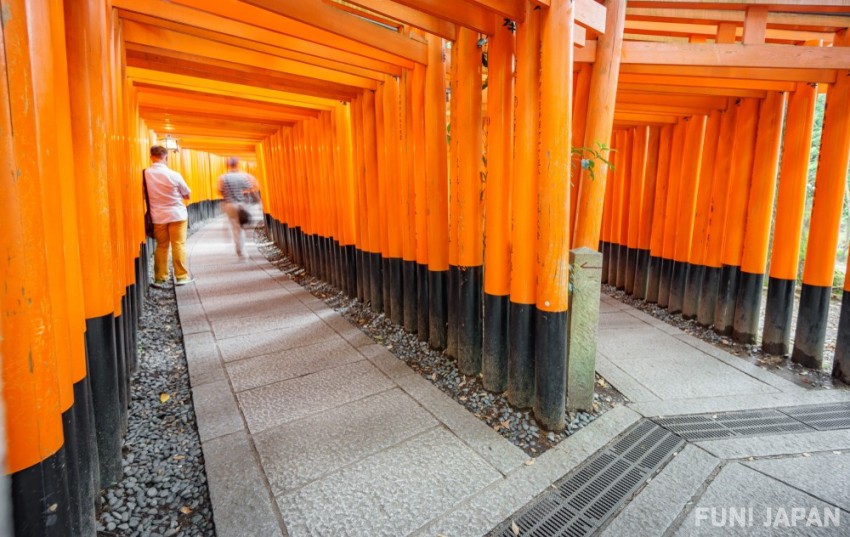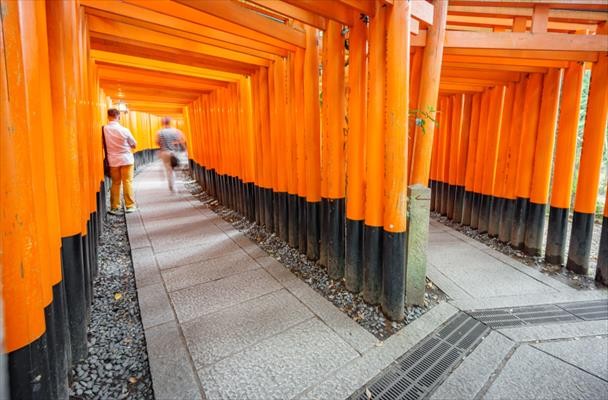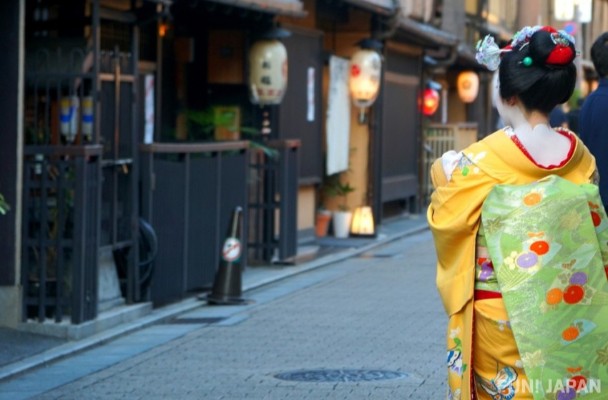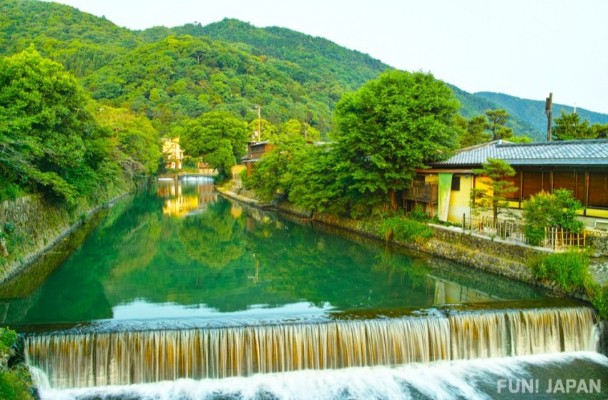
Known around the world for its beautiful vermilion gates, Fushimi Inari Shrine is a popular destination for tourists and locals alike! Easily accessible and with beautiful photo opportunities, as well as hiking paths, it’s no wonder that Fushimi Inari Shrine is a must-visit location in Kyoto.
About the Fushimi Inari-Taisha Shrine
Fushimi Inari Shrine, fully named the Fushimi Inari-Taisha, is the head shrine of the god Inari, who is the Shinto god of rice. At Fushimi Inari Shrine, you will thousands upon thousands of smaller shrines on the premises, including the breathtaking vermilion gates that can be seen in popular movies and anime.
Many of the gates are paid for with donations via businesses and individuals. The prices for donating a gate can start from 400,000 yen and can go upwards to 1 million yen, though there are other options available for tourists that wish to donate a smaller amount.
Fushimi Inari Shrine is also popular due to the hiking trail that you can take which will bring you to the summit of the mountain. The a round trip to the top of the mountain and back to the main area of the shrine takes around 2 hours or more depending on your physical condition, so make sure to bring some water before braving the climb!
Visiting Fushimi Inari Shrine at Night
Although many other shrines tend to close to the public in the late evening until the next day, Fushimi Inari Shrine is actually open 24 hours a day and allows visitors to walk throughout the premises at any time.
Due to being open in the evening, it is one of the most beautiful times to snap pictures and to enjoy the grounds without the major crowds of visitors that visit throughout the day.
During the evening, the crowds tend to thin out and you can enjoy walking through the many gates without being obstructed by tour groups and other tourists. Once the sun sets though, it is recommended to make your way back to the entrance as some of the trails can get dark and difficult to navigate.
Fushimi Inari Shrine History
Texts and manuscripts such as the Yamashirokoki Fudoki, believe that the deity Inari Okami was enshrined in the area of Fushimi Inari Shrine in the early 700s. In 942, the shrine was elevated to the highest rank for Shinto Shrines and is the head of all Inari Shrines throughout Japan.
Around 1468, the shrine and many of the buildings were burned down due to the Onin Rebellion and rebuilt again in 1499. In the year 1589, Toyotomi Hideyoshi donated the main gate that is the first thing you see when arriving at the shrine.
As the years went by, Fushimi Inari Shrine was registered as a national treasure of Japan and celebrated its 1300th anniversary in 2011. Though many of the buildings were rebuilt throughout the years, the shrine itself is still amazing to visit in person.
Fushimi Inari Shrine Hours
You will be happy to hear that Fushimi Inari Shrine is open 24 hours a day, however if you are visiting to participate in the prayers and ceremonies at the shrine, you will have to visit the shrine between 8:30 am in early morning to 4:30 pm in the late-afternoon.
The busy times at the shrine are usually from 10:00 am until around 5:00 pm, when many locals and tourists from around the world congregate in the main areas of the shrine, including the gates that go around the mountain itself.
As Fushimi Inari Shrine is open 24 hours a day, it is suggested to visit early in the morning before the crowds come if you want to get that perfect picture. For those looking to come in the evening, that is also possible, but please be aware that some of the trails do not have any lighting late in the evening so it may be difficult to find your way.
Spot information
- Spot name: Fushimi Inari Taisha Shrine
- Street address: 68 Fukakusa Yabunouchicho, Fushimi-ku, Kyoto, Kyoto 612-0882
- Access: A 3-minute walk from Inari Station on the Nara Line





Comments